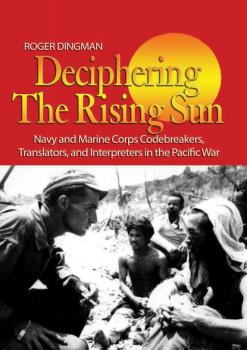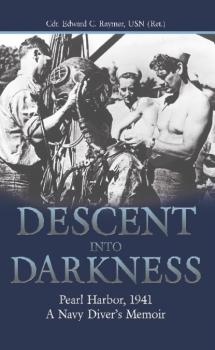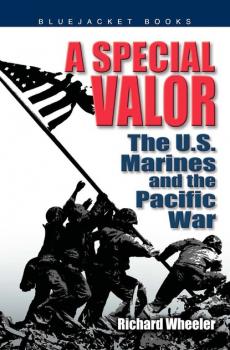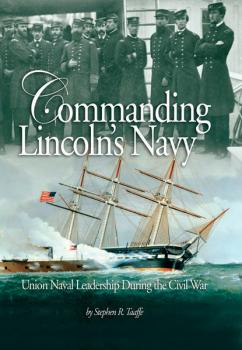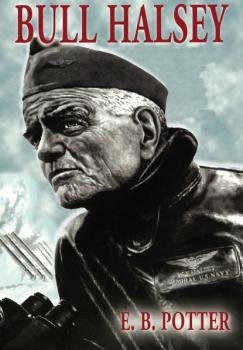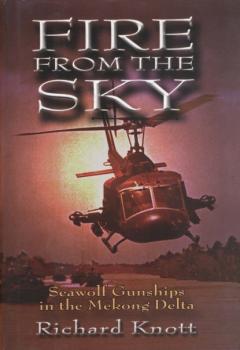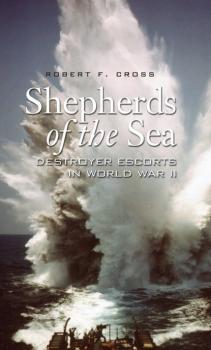ТОП просматриваемых книг сайта:
Историческая литература
Различные книги в жанре Историческая литература, доступные для чтения и скачиванияАннотация
This book is the first to document the vital role played by Americans, not of Japanese ancestry, who served as Japanese language officers in World War II. Covering the period 1940-1945, it describes their selection, training, and service in the U.S. Navy and Marine Corps during the war and their contributions toward maintaining good relations between America and Japan thereafter. Author Roger Dingman argues that their service as codebreakers and combat interpreters hastened victory and that their cross-cultural experience and linguistic knowledge facilitated the successful dismantling of the Japanese empire and the peaceful occupation of Japan. He shows how the war changed relations between the Navy and academia, transformed the lives of these 1,200 men and women, and set onetime enemies on a course to enduring friendship. The book s purpose is twofold: to reveal an exciting and previously unknown aspect of the Pacific War and to demonstrate the enduring importance of linguistic and cross-cultural knowledge within America s armed forces in war and peace. The book is meant for general readers interested in World War II, as well as those with an interest in America's intelligence establishment and those fascinated by Japan and its relations with the United States. Based on extensive interviews with the language officers and on their wartime letters and unpublished memoirs, this history reveals how brains and a devotion to duty allowed these officers to learn an extraordinarily difficult language and use it to hasten Japan s defeat as well as to assist the transformation of the Japanese from enemy to friend of America. It is also, the author notes, a telling example of how empathy and cross-cultural understanding rather than brute force and coercion can lead to greater production of valuable intelligence and active collaboration.
Аннотация
Sergeant Major Devaney’s They Were Heroes presents moving portraits of warriors who have not been fully celebrated. His stories recognize the heroism of those who fought in these deadly conflicts and placed their lives at risk to assure the safety of their fellow Marines. For these Marines, no Medal of Honor is enough for their bravery. Nonetheless, though not his main purpose, Devaney calls attention to the practice of awarding medals itself, that often these warriors received awards that were below what their deeds merited. No less disturbing is the revelation that medals were often awarded by rank, and not always by action. The lives presented in Devaney’s book call attention to the fact that many heroes of these deadly conflicts have gone unrecognized.
Аннотация
On December 7, 1941, as the great battleships Arizona, Oklahoma, and Utah lie paralyzed and burning in the aftermath of the Japanese attack on Pearl Harbor, a crack team of U.S. Navy salvage divers headed by Edward C. Raymer are hurriedly flown to Oahu from the mainland. The divers have been given a Herculean task: rescue the sailors and Marines trapped below, and resurrect the pride of the Pacific fleet.Now for the first time, the chief diver of the Pearl Harbor salvage operations, Cmdr. Edward C. Raymer, USN (Ret.), tells the whole story of the desperate attempts to save crewmembers caught inside their sinking ships. Descent into Darkness is the only book available that describes the raising and salvage operations of sunken battleships following the December 7th attack.Once Raymer and his crew of divers entered the interiors of the sunken shipwrecks—attempting untested and potentially deadly diving techniques—they experienced a world of total blackness, unable to see even the faceplates of their helmets. By memorizing the ships’ blueprints and using their sense of touch, the divers groped their way hundreds of feet inside the sunken vessels to make repairs and salvage vital war material. The divers learned how to cope with such unseen dangers as falling objects, sharks, the eerie presence of floating human bodies, and the constant threat of Japanese attacks from above.Though many of these divers were killed or seriously injured during the wartime salvage operations, on the whole they had great success performing what seemed to be impossible jobs. Among their credits, Raymer’s crew raised the sunken battleships USS West Virginia, USS Nevada, USS California, After Pearl Harbor they moved on to other crucial salvage work off Guadalcanal and the sites of other great sea battles.
Аннотация
If the U.S. Marines gave birth to a legend in the halls of Montezuma in the nineteenth century, they added glorious luster to it with their heroism and victories against the Japanese in World War II. For this vivid, foxhole view of the Marines' war, Richard Wheeler draws extensively on frontline eyewitness accounts of Marines and combat journalists and backs up their stories with official U.S. action reports and captured Japanese materials. First published in 1983, the book has earned praise as a popular, one-volume history of all the battles fought by the Marine Corps in the Pacific campaign. The book describes in fascinating and exciting detail the heroic defense of Wake Island against an overwhelming enemy assault force. It traces the long bloody battle for Guadalcanal that brought the Marines their first victory and gave America and its allies control of the strategically important Soloman Islands. It follows the painful, island-by-island counterattack toward the Japanese homeland when the Marines created new legends at such places as Bougainville, Saipan, Tarawa, Guam, Iwo Jima, and Okinawa. Here are the remarkable exploits of the Marines holding off Japanese assault waves at Heartbreak Ridge, storming across coral reefs, and struggling up the slopes of Mount Suribachi to raise the Stars and Stripes. Some sixty-five photographs enhance the book, which is now available in paperback for the first time.
Аннотация
The Union Navy played a vital role in winning the Civil War by blockading Confederate ports, cooperating with the Union Army in amphibious assaults, and controlling the Mississippi River and its tributaries. President Lincoln understood, however, that the Navy was not as important, militarily and politically, to the war effort as the Army, so he delegated authority to his Secretary of the Navy, Gideon Welles, who divided the Navy into six squadrons and hand-picked their commanders. This book examines Welles selections and why he appointed them. While noting that the officers records, character, and abilities were of primary importance, Taaffe acknowledges that political connections, seniority, and availability were also factored into the selections. He demonstrates that Welles appointments improved markedly as the war continued and as he gained a better understanding of the Navy and its officer corps. Taaffe contends that Welles eventual success in picking effective squadron commanders contributed greatly to Union victory.
Аннотация
Saying that no generation of Americans has produced a finer array of combat commanders than that of World War II, a thirty-year army veteran examines combat leadership throughout the war at every level of command in the U.S. Army. The author argues that although Army chief of staff George C. Marshall's organization and training policies were indispensable, the ultimate victory was the result of spirited leadership and the undaunted courage of those who served, from individual riflemen to the upper echelons of army command. Rather than a history of battles and campaigns, this book is an analysis of leadership in combat over three continents and across two oceans. It looks at how soldiers react in war – how sergeants, lieutenants, captains, and generals direct soldiers in the most intense of all human dramas. The first part focuses on the generals and takes a thematic approach, examining such topics as restoring the fighting spirit and analyzing the unique characteristics required to command special units in combat. The second part examines a special breed of junior leaders who fought the German and Japanese armies on the front lines and whose contributions merit attention. Like war correspondent Ernie Pyle, Kingseed includes both the big and the little to offer a balanced view of what makes a good combat leader.
Аннотация
Applauded by the public and revered by the men who served under him, Adm. William F. Halsey was one of the leading American personalities of World War II. His reputation as a no-holds-barred fighter and his tough-guy expression earned him the nickname «Bull,» yet he was also known for showing genuine compassion toward his men and inspiring them to great feats in the Pacific. Originally disclaiming, the praise heaped on him, Halsey eventually came to believe in the swashbuckling legend that surrounded him, and his conduct became increasingly controversial. Naval historian E. B. Potter, who established his reputation with an award-winning biography of Chester W. Nimitz, gets behind the stereotype of this national hero and describes Halsey at his best and worst, including his controversial actions at Leyte Gulf. To write this book Potter had full access to Halsey's family and to the admiral's private papers and provides detail of Halsey's youth and career before the war. First published in 1985, it remains the definitive study.
Аннотация
The best way for today’s sailors to learn about a battle is from those who fought it. The Battle of Midway, commemorated annually in the U.S. Navy, warrants close attention. This Naval Institute guide includes some of the most vibrant and informed accounts by individuals who fought on both sides of the June 1942 battle. The anthology pulls together memoirs, articles, excerpts from other Naval Institute books, and relevant government documents to help readers understand what happened and explain why the battle was so significant to the naval service. The core of the book focuses on events leading up to the battle and the battle itself, with a separate section examining how others have interpreted the battle’s often desperate engagements. When the U.S. Navy stopped the Japanese steamroller off Midway Island, it not only turned the progress of the war but set the Navy’s foundation for future counter offensives. The Navy’s comeback spread led to the Solomon Islands and on to the other key strategic areas in the Pacific. While many know that Midway was a crucial American victory, they often do not know the details of the battle. This book tells how, for example, the American PT boats contributed to the victory, how the carrier planes formed up for their attacks, and what role radar played in the battle. In addition to excerpts from books and articles, the guide includes selections from several important Naval Institute oral histories. From the enlisted man’s perspective all the way to the admiral’s, for both Americans and Japanese, readers see the U.S. Navy’s greatest victory as the participants saw it.
Аннотация
This is the dramatic history of the HAL-3 Seawolves, the U.S. Navy's first and only helicopter gunship squadron of the Vietnam War. The squadron was established «in country» to support the fast, pugnacious river patrol boats of the brown water navy. Flying combat-worn Hueys borrowed from the Army, the mission of the Seawolves quickly expanded to include rapid response air support to any friendly force in the Delta needing immediate, no-holds-barred assistance. Operating in two-plane detachments from specifically configured LSTs, hastily constructed bases, and primitive campsites, the navy gunships and their crews responded to calls within minutes. Flying in all kinds of weather, day and night, they arrived at tree-top level with forward-firing rockets and flex-guns blazing. Door gunners hung outside the violently maneuvering helicopters delivering a hail of fire with their hand-held M-60 machine guns. The Seawolves inserted SEALs deep into enemy territory, and extracted them, often despite savage enemy opposition. They rescued friendly combatants from almost certain capture or death, and evacuated the wounded when Medevac helicopters were not available.Gleaned from historical documents and the colorful recollections of more than sixty Seawolf warriors, this is the first complete history of the most decorated Navy squadron of the Vietnam War. Naval aviator Richard Knott recounts the story of the Seawolves from the dawning of the concept to the moment the last squadron commander turned out the lights.
Аннотация
This compelling tale of courage, heroism, and terror is told in the words of ninety-one sailors and officers interviewed by the author about their World War II service aboard fifty-six destroyer escorts. They reveal many never-before-told details of life at sea during wartime and, along with information found in secretly kept war diaries and previously unpublished personal photographs, add important dimensions to the official record. Unseasoned teenage recruits when they first went to sea, these sailors were led by inexperienced college boys more accustomed to yachts than warships. Their ships were untested vessels, designed by a man with no formal training in ship design, and which many viewed as a waste of money. Yet, as Cross points out, these men are credited with helping turn the tide of the war in the Atlantic as they singlehandedly sank some seventy U-boats and captured U-505, the only German submarine taken during the war and the first enemy vessel captured by Americans at sea since the War of 1812. In the Pacific, the destroyer escorts fought in every major battle, side-by-side with Allied battleships and destroyers. But this story is not just about battles. It is also about American genius, hard work, honor and growing up in the Great Depression. The author provides eyewitness details about the historic first step taken to end racial discrimination in the military as African-Americans stepped aboard the destroyer escort USS Mason as full-fledged sailors for the first time and earned a Navy commendation of heroism in the Battle of the Atlantic presented to the surviving crewmen fifty-one years later. Readers also learn about an ingenious invention when a sailor breaks his silence about a secret weapon tested aboard his destroyer escort that rendered a new German radio-controlled glide bomb useless.

